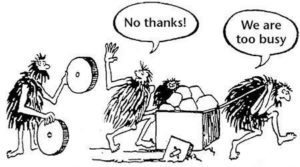A guest post by Sarah Tedesco, DonorSearch
Donors contribute to your nonprofit because they are passionate about your cause. However, with so many worthy causes out there, you need to nurture each donor’s personal interests in your nonprofit in order to retain their support.
This natural interest in your cause or nonprofit is called donor affinity. Cultivating donor affinity is an effective way for your nonprofit to maintain engagement and ensure donors remain connected to your cause.
So how can you encourage donor affinity? One great way to ensure your donors continue to care about your organization is to host an event that sparks their passion. Here are our top three event ideas for improving donor affinity:
- Charity Auction
- 5K Run or Walk
- Educational Webinar
Each of these events will allow your organization to connect with donors and build a stronger community among your supporters. By growing your community and reminding donors of their impact, you can improve donor affinity and ensure that your supporters remain engaged. Let’s take a closer look at each of these events and how you can plan them successfully.
1. Charity Auction
Auctions are not only a great way to raise money for your nonprofit, but they’re also a very engaging event for your supporters. Auctions provide an opportunity for your donors to support a cause they care about while also purchasing something they truly love. Here are a few tips to keep in mind when planning your auction:
- Determine what type of auction you’ll host early on. Before you dive into the details of planning your auction, you’ll need to determine what type of auction you’d like to host. Will it be a traditional or silent auction? In-person, virtual, or hybrid? Once you determine the type of auction you’ll host, you can adjust your planning and marketing strategy accordingly.
- Connect with local businesses. Local businesses can have a huge impact on your local community and how involved they become with your work. Consider reaching out to local businesses to see if they’d be interested in donating items to your auction to demonstrate their support for your cause. Local businesses can also connect you with patrons of their establishments who might already have an interest in your cause.
- Emphasize the impact of bids. To cultivate donor affinity, you need to demonstrate how your donors are making an impact. During the auction, be sure to emphasize how donations and bids will help your nonprofit achieve your goals, launch new initiatives, and forward your mission.
While an auction doesn’t explicitly draw on a donor’s natural interest in your nonprofit, there are plenty of opportunities to nurture donor affinity. Because auctions are such engaging events, your donors will likely already be paying close attention to the event, meaning it’s the perfect chance to share important information about your cause.
2. 5K Run or Walk
One reliable way to improve donor affinity is to build community. A strong community of supporters can motivate, inspire, and educate each other, and there’s no better event to build community than a 5K race. These races can gather many of your supporters together and rally everyone around your cause. When planning your 5K run or walk, you should:
- Encourage teams. Teams are a great way to add some friendly competition while getting more supporters involved! For instance, if you have an active alumni network, encourage them to form their own teams and see which alumni groups can raise the most funds.
- Share content about your nonprofit and mission. In the registration process, follow-up emails, and on the actual day, be sure that you’re reminding participants why they’re there: to support your nonprofit. Consider having beneficiaries of your nonprofit speak at the event and share their story to deepen the personal connection that your donors have to your cause.
- Host a celebration at the end. When the 5K run or walk is over, host a big celebration with food, games, and a ceremony to celebrate your fastest runners and most effective peer-to-peer fundraisers. A celebration will ensure that your participants enjoy their time and associate your nonprofit with happy memories!
To help your event run as smoothly as possible, invest in nonprofit software that allows you to register participants, track their donations, and identify relationships between donors (such as members of the same family who joined the same team). With this information, you can identify opportunities to grow donor affinity even after the event is over.
3. Educational Webinar
In many instances, donor affinity can grow out of newfound awareness or education. Perhaps a potential donor had no idea about the cause that your nonprofit is supporting or they were recently affected by the issue you’re trying to address. They will turn to your nonprofit to provide answers to their questions and knowledge about the issue.
With the right approach, your nonprofit can make supporters care even more about the issue, improving donor affinity across the board. To raise awareness about your cause, host an educational webinar featuring informed speakers and representatives of your nonprofit.
To host a successful webinar, you should:
- Discuss topics that are interesting to your donors. Each donor’s interest in your nonprofit likely grew out of different circumstances, but they probably want to learn more about similar topics. Design your webinar around certain topics that are the most interesting to your donors. And if you’re unsure which topics your donors might be interested in, don’t be afraid to ask!
- Emphasize how your nonprofit has made a difference. While donors may be interested in your cause, they might not have a full understanding of how your nonprofit is making a difference. During your webinar, emphasize the difference that your nonprofit has made and how donations can help you further your impact.
- Host a Q&A session. A great webinar likely prompts questions from your audience, so give attendees the chance to ask speakers their burning questions. Creating a dynamic and engaging conversation will also help donors feel like an integral part of your nonprofit’s dialogue.
Hosting an exclusive webinar is also a great way to nurture affinity among major donors. According to DonorSearch’s guide on major donor fundraising, creating events specifically targeted towards major donors can effectively deepen their engagement and encourage them to donate more. A webinar is the perfect way to combine education with your long-term fundraising strategy.
Cultivating donor affinity is crucial for any nonprofit. Not only can it help you better tailor your nonprofit’s marketing strategy, events, and programs, but it can also help you deepen each donor’s relationship with your nonprofit. Good luck!
 Sarah Tedesco is the Executive Vice President of DonorSearch, a prospect research and wealth screening company that focuses on proven philanthropy. Sarah is responsible for managing the production and customer support department concerning client contract fulfillment, increasing retention rate and customer satisfaction. She collaborates with other team members on a variety of issues including sales, marketing and product development ideas.
Sarah Tedesco is the Executive Vice President of DonorSearch, a prospect research and wealth screening company that focuses on proven philanthropy. Sarah is responsible for managing the production and customer support department concerning client contract fulfillment, increasing retention rate and customer satisfaction. She collaborates with other team members on a variety of issues including sales, marketing and product development ideas.



